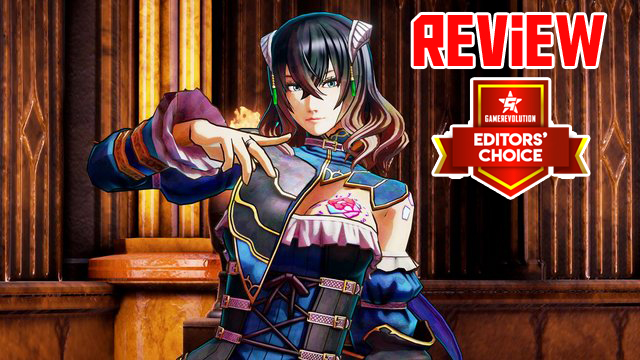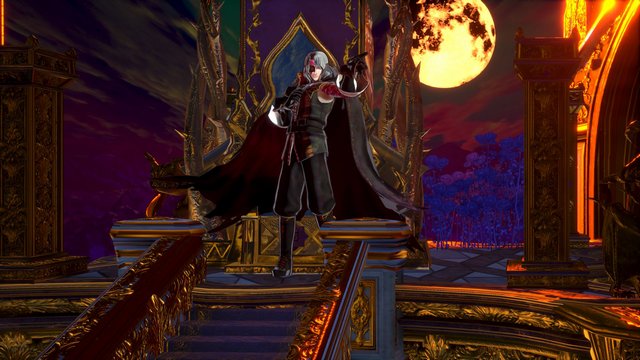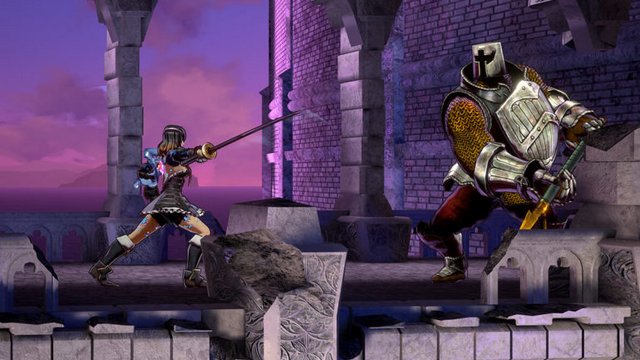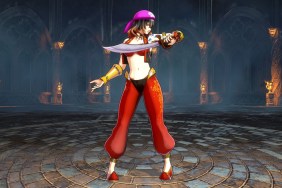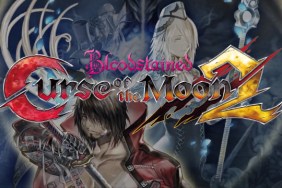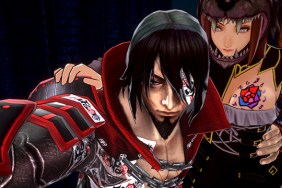When you hear the word “derivative” used to describe a game, it’s usually a bad thing. A sequel that’s too close to its predecessors or a title that strays too close to its peers tends to be derided as lacking originality. However, in Bloodstained: Ritual of the Night‘s case, its similarity to Castlevania: Symphony of the Night is the best thing about it. Symphony of the Night is the “vania” part of “Metroidvania,” and 22 years after its release it stands as the best of the genre it helped define.
Koji Igarashi was a major creative voice behind Symphony of the Night and originated the exploration and RPG elements that made that game so beloved. He went on to direct and produce more entries in the Castlevania series which made use of the elements introduced in Symphony of the Night. Fortunately, even though Konami has severely curtailed its video game development efforts, Igarashi continues to be passionate about developing video games. Bloodstained was funded on Kickstarter in 2015 and broke the record for funding for a video game up to that point.
Kickstarted games don’t have an excellent track record, and after four years in development, I started getting a little antsy about Bloodstained. After playing through it for review, I have to say all those fears have been allayed. Ritual of the Night is exactly the game Igarashi-san promised, and it’s an absolute joy to play.
One disclaimer I have to put in this review is that I played the game on PS4. According to reports, Bloodstained on the Nintendo Switch faces a multitude of issues. Bear in mind that the opinions below are based on a PS4 playthrough alone, so please research further if you’re thinking about buying the game on the Switch.
Bloodstained: Ritual of the Night Review | Dracula’s Gebel’s Castle
Ritual of the Night has a stronger story than your typical Castlevania game, but that’s not saying much. The game takes place in an alternate version of the late 1700s at the beginning of the Industrial Revolution. With machines and science replacing them, an arcane group called the Alchemists fall out of favor with the aristocracy and lose their patronage.
In response, the Alchemists unleashed demons upon the earth to scare the aristocracy into turning to them for help. They did so by binding the souls of demons to humans and then sacrificing them, which unleashed the demonic energy. The Alchemists miscalculated just how powerful the powers they released would be, and humanity wages a terrible war against the demonic forces. With the help of the Church, humankind is eventually victorious.
The main story has you playing as Miriam, a woman who has had crystals embedded into her skin that can channel demonic powers. She’s one of two individuals implanted with crystals that escaped sacrifice by the Alchemists. Before they could kill her, she fell into a mysterious coma, in which she stayed for ten years.
Ritual of the Night picks up a decade after the war against the demons, and Miriam has finally awakened from her slumber. The other person who survived the Alchemists sacrifice, a man named Gebel, has summoned a demon castle, and Miriam must confront him and prevent the demons from once again sweeping over the world.
While there are some exciting twists, the story is mostly just to motivate the gameplay. That’s not a bad thing at all. There’s enough to keep you hooked and give you some story motivation to keep going. The plot also drives your exploration, as fighting a boss or having a conversation can give you the hint you need to know where to go next.
Bloodstained: Ritual of the Night Review | Demonically good gameplay
The gameplay is the real attraction of Bloodstained: Ritual of the Night. It’s one of the most satisfying 2D platformers I’ve ever played, and controlling your character feels phenomenal. It has all the varied movement that made Symphony of the Night feel so dynamic, and the ability to cancel attacks and actions, or chain them into others gives a learning curve to the controls that most of its peers don’t have.
In addition to multiple weapons types, knives, axes, swords, rapiers, greatswords, spears, whips, and guns, all of which control differently, you get access to multiple magic attacks. These attacks are gained by equipping demon shards, which drop from enemies randomly and give you a ton of options to build your character. In addition to all these offensive options, many weapons also have a hidden move. The more you do this secret move, the more mastery you gain over a weapon, and when this stat is maxed, you can use the hidden move with any weapon of that type. So, if you find a sword that allows you to parry attacks with down, down + square, if you pull off the move successfully enough times, you can use that move with any sword.
There’s also a full equipment system that allows you to don armor, hats, and accessories to boost your stats or bestow buffs. The equipment system is intimately connected to the shard system. Passive shards can give you boosts to your stats which can offset some of the disadvantages your current equipment set has, or augment its strengths.
You can also level up each shard. Bloodstained has an alchemy system which allows you to craft items, weapons, and armor, and also lets you improve the power of your shards. There are crafting items all over the game, and by collecting these, you can spend them to increase your shards’ strength. You also will make your shards stronger by collecting multiples of each one. Each enemy in the game has a unique shard, and so you’re incentivized to continue hacking them down, even hours after you’re able to one-hit kill them.
Ritual of the Night encourages farming, but it isn’t a necessity. On normal difficulty, you can play the game pretty much straight through without too much trouble. However, seeing how strong you can make Miriam adds replay value in itself. Some optional bosses and areas require you to toughen up, and with how well the game controls, it’s a continued treat to keep fighting enemies and gaining gold, shards, and items, even when the story is at its end.
Bloodstained: Ritual of the Night Review | Art: Meh, Sound: Yeah!
Ritual of the Night‘s art direction is likely where fans are going to have the most divisive opinions. Symphony of the Night‘s sprites are beautifully crafted, and hold up well today, and I would have liked to have seen the art designers on Ritual of the Night take a similar approach.
Instead, Bloodstained has a 2.5D style that is adequate but doesn’t really pop. It’s a shame since most of the creatures and characters are designed in a way that would look amazing in sprite form. Instead, the game ends up with a more sterile, generic look that doesn’t do the excellent gameplay justice.
Fortunately, the fantastic soundtrack makes up for the relatively bland graphics. Igarashi brought Michiru Yamane, composer on Symphony of the Night, onboard for Bloodstained and no one could have done the job better. Yamane channels the brooding, heavy Victorian themes she used in Symphony of the Night, but brings 20 more years of experience to bear. The result is an absolute aural treat and sets the perfect tone for the game. Yamane is an underrated name in game composing, and she really shows that her name belongs among the greats with her work in Ritual of the Night.
Bloodstained: Ritual of the Night Review | An almost flawless spiritual successor
Ritual of the Night is a must-play for any Metroidvania fan. If you love the genre, just stop what you’re doing and get the game. You won’t regret it. It also serves as an excellent introduction to the genre. The difficulty level on normal is just enough to give you a challenge and is more approachable than Symphony of the Night and Super Metroid.
Metroidvanias are seen as niche games, but Bloodstained proved that you can craft a title in that tradition while making it incredibly appealing to a general audience. Ritual of the Night is one of the best games released so far this year, and even if you don’t love 2D platformers, the excellent exploration elements, movement, and combat are good enough to win anyone over.
-
Amazing gameplay and tight controls make this game a pleasure to play.
-
Extensive equipment system allows a ton of build customization.
-
Captures the elements that made Symphony of the Night a classic while not being too close of a copy.
-
Awesome soundtrack by Michiru Yamane.
-
2.5D graphics can be a little bland.
